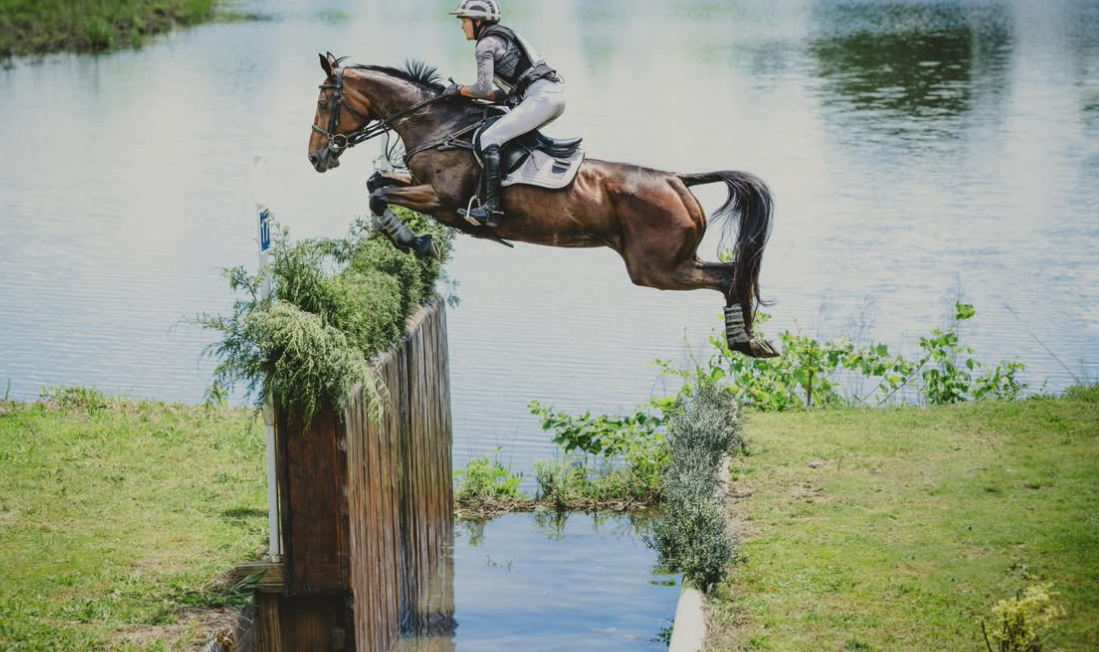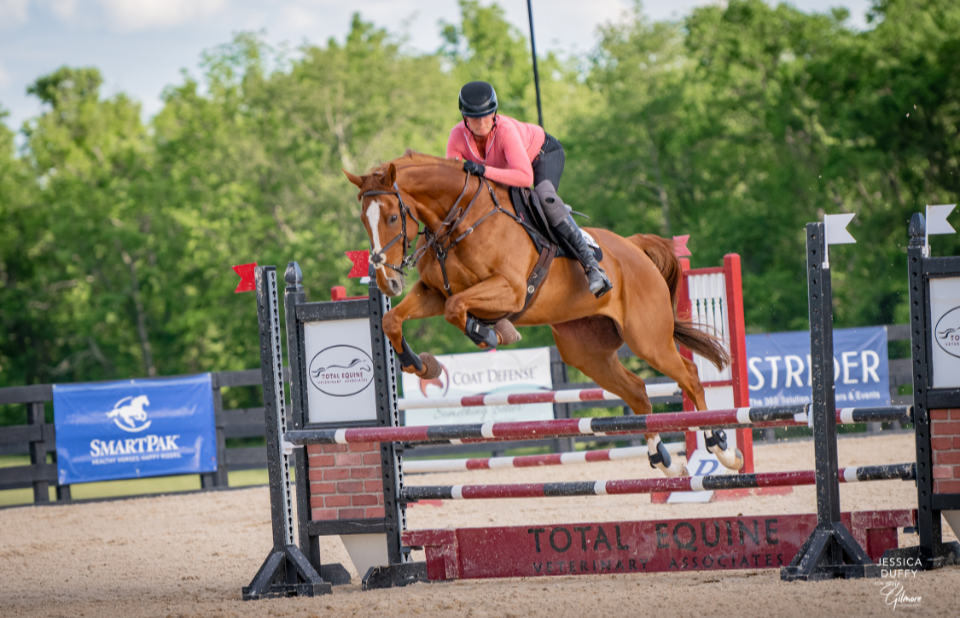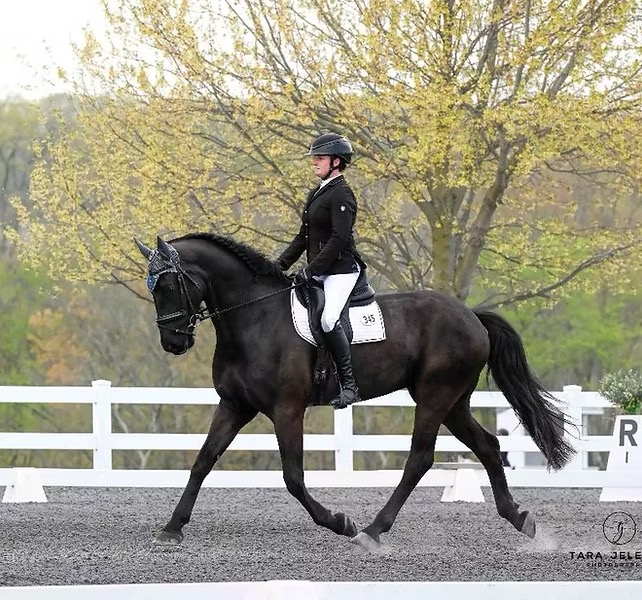Continued from Part I …

Photo by Leslie Wylie.
It is important to take the full context of any situation into account and understand that people often get into trouble because of ignorance rather than intent. The main aim of all equine organisations is education, support and early intervention to ensure the welfare of the horse.
If a competition is being held under the auspices of a National Governing Body, such as the USEA, then they are responsible for ensuring humane practices. The USDA (United States Department of Agriculture) has a specific responsibility to end soring, under the terms of the Horse Protection Act, and there are a number of animal welfare charities who will respond to allegations of cruelty, neglect and abuse, including the ASPCA (American Society for the Prevention of Cruelty to Animals). In addition it should not be forgotten that your local veterinary surgeon will be able to give valuable advice in all matters relating to suspected abuse.
In the USA there has been a long-term problem relating to horses being exported for slaughter to Mexico and Canada. The key to preventing horse abuse in this area is to both discourage indiscriminate breeding and encourage a culture within the racing and sport horse world where we recognize our responsibility to keep older horses active, doing appropriate work, and therefore be valued and cared for.
RECOGNISING PHYSICAL ABUSE
Exhaustion: The recovery rate of the horse’s pulse is the most accurate measure to use. At rest most horses are between 30 – 40 per minute. As a general rule of thumb even after hard work the aim should be to have a conditioning programme that allows a horse to be back to 60 or below after 10 – 15 min, and back to normal after 15 -20 min. If this does not happen they need to see a vet.
Inability to perform: All competition requirements are part of a progressive structure of exercises, requiring training based on harmony and cooperation in order to produce a happy athlete. It is abuse of the horse if they are required to perform without this progression and therefore struggle to perform with reasonable ease. They may also struggle because of rider incompetence, or physical deterioration of the horse caused by age, injury or sickness.
In jumping competitions there are clear strategies to control this and prevent abuse, and in dressage qualifying scores are increasingly required in order to progress. In all competitions the warm up arenas have regulations for use and are stewarded. In competitions most falls of rider and all falls of horses now require retirement, although in hunting and pleasure riding this does not apply.
In eventing a real concern of mine is the type of mechanical and forceful dressage training that takes away the horse’s natural instincts and produces varying degrees of learned helplessness. As a result, when their rider makes a mistake riding cross country, they are either slow to react or fail to react. They lose their fifth leg and instinct for self preservation and may fall. I therefore believe that this dressage training constitutes abuse both because of the way it is done and the increased possibility of a fall and injury.
Tack: All tack and equipment should sit comfortably. Anything that causes anything but temporary rubs is unacceptable, including saddles rubbing the withers, nosebands causing bruising and damage on the head and inside the mouth, and bits cutting the mouth and tongue. I invented the Micklem bridle to overcome the five main areas of pain and discomfort created by cranked nosebands, low dropped nosebands and traditional bridles and thankfully there is now a hugely increased awareness of head comfort.
Weight of rider: As a general rule of thumb pleasure riding horses, doing largely slow work, should carry not more than a maximum of 20% of their body weight, and with competition horses the maximum figure should be 15%, although in both cases both performance and longevity of use will be helped with smaller burdens. Therefore a typical half-bred pleasure riding horse of 544kg (1,200lbs) should not carry more than approx 109kg (240lbs/17 stone) and a similar competition horse approx 81.75kg (180lbs/12.75 stone). With young horses it is important that they carry only light weights, up to 10% of their body weight, as the growth plate in the spine do not close until they are between 4 ½ to 5 ½ years. Generally speaking ponies are stronger than horses and will be better able to carry closer to 20% of their body weight even for competition work. NB: all weights including the saddle.
Feeding: Both underfeeding and overfeeding is abuse and colic is a regular cause of fatalities, so good feeding practices including regular worming are vital. There are three golden rules of feeding:
1) To feed little and often. A horse is designed to eat grass regularly and has a small stomach, consuming about 2.5% of their body weight per day. Therefore they do best with a majority of grass or hay and should not be given a feed of grain or nuts of more than 4lbs in one feed.
2) Horses must drink often. Therefore they need a constant supply of clean water that is neither very cold or very warm, although some horses prefer water that is flavored by a little hay or similar natural addition.
3) Horses need to balance food intake with work done. Many horses have too much high food value grain and haylage when they would do better with more low food value but clean hay or grass if it is available.
Shoeing: Not all horses need to be shod. Many horses can in particular cope well without hind shoes, depending on the work they are doing, the footing and the quality of the feet. However the vast majority of horses need their feet regularly trimmed and balanced. To leave a horse’s feet uncared for is abuse and as the foot lengthens and even begins to curl round a horse will become crippled, leading to terrible suffering and usually an early death.
RECOGNISING MENTAL UNEASE AND ABUSE
A horse that is content and at ease will be calm but alert, with normal breathing, and be willing and comfortable in their work. They will have relaxed mobile ears and relaxed lips and happy to engage with those who ride and look after them. If they are not at ease mentally they will begin to lose these attributes to a greater or lesser degree depending on their individual personality.
Mental abuse is often difficult to evaluate but the unacceptable practices that cause mental abuse are well known, such as the use of brute force, pain and fear instead of harmonious progressive training. In addition ignorance relating to a horse’s essential needs or appropriate training exercises can cause mental abuse, including leaving a horse in isolation, or inactive in the stable, or the opposite abuse caused by working a horse to excess.
A horse will show signs of mental unease or abuse with some or many of the following:
1) abnormally raised temperature, pulse and/or respiration,
2) ears fixed back and looking back, with possibly the tail clamped down,
3) grinding of the teeth, lifting of the lips and tongue, and/or habitual mouth movement,
4) becoming nervous and tense in their work, or the opposite,
5) developing a learned helplessness, becoming depressed, unreactive or mechanical in their responses,
6) developing a stable vice such as crib biting, wind sucking, weaving and stable walking. However some horses have a genetic predisposition for stable vices that may be triggered not just by stress but also by excitement,
7) going off feed and losing weight.
Horses will also show many of these signs when they are in pain from injury or sickness, so it is important to have a good veterinary assessment. But what most of us are quick to learn is that the mental state of the majority of horses immediately tends to improve when they are:
A) turned out (Dr Green),
B) turned out in company
C) they enjoy their work. It is rare to see unhappy horses out hunting!































